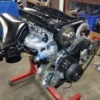Rb25 Coolant Flow / Hose / Swirl Pot / Header Tank Setup
Announcements
-
Similar Content
-
Latest Posts
-
Hi All Got an R33, about 114,000km on the clock. Handles very nice, no signs of issues. Engine is out and i'm doing an underbody refresh, mainly painting subframe, cosmetics etc. Can't see anything physically giving play, but I'm wondering which bushes are the ones that wear the most, or the first ones that may give problems down the track? For good measure I'm thinking to fit new ones. Thanks
-
This post has OUTER tie rod torque spec - what about INNER tie rod torque spec??? Cannot find this info ANYWHERE.
-
By DraftySquash · Posted
yeah not selling the S2 bumper yet. -
I'd leave the series 2 bumper on there. Anything else is gonna be a bit janky TBH :p (or at least keep it)
-



.thumb.jpg.0587eb4ad8984ef89760b02271b3381b.jpg)




Recommended Posts
Create an account or sign in to comment
You need to be a member in order to leave a comment
Create an account
Sign up for a new account in our community. It's easy!
Register a new accountSign in
Already have an account? Sign in here.
Sign In Now